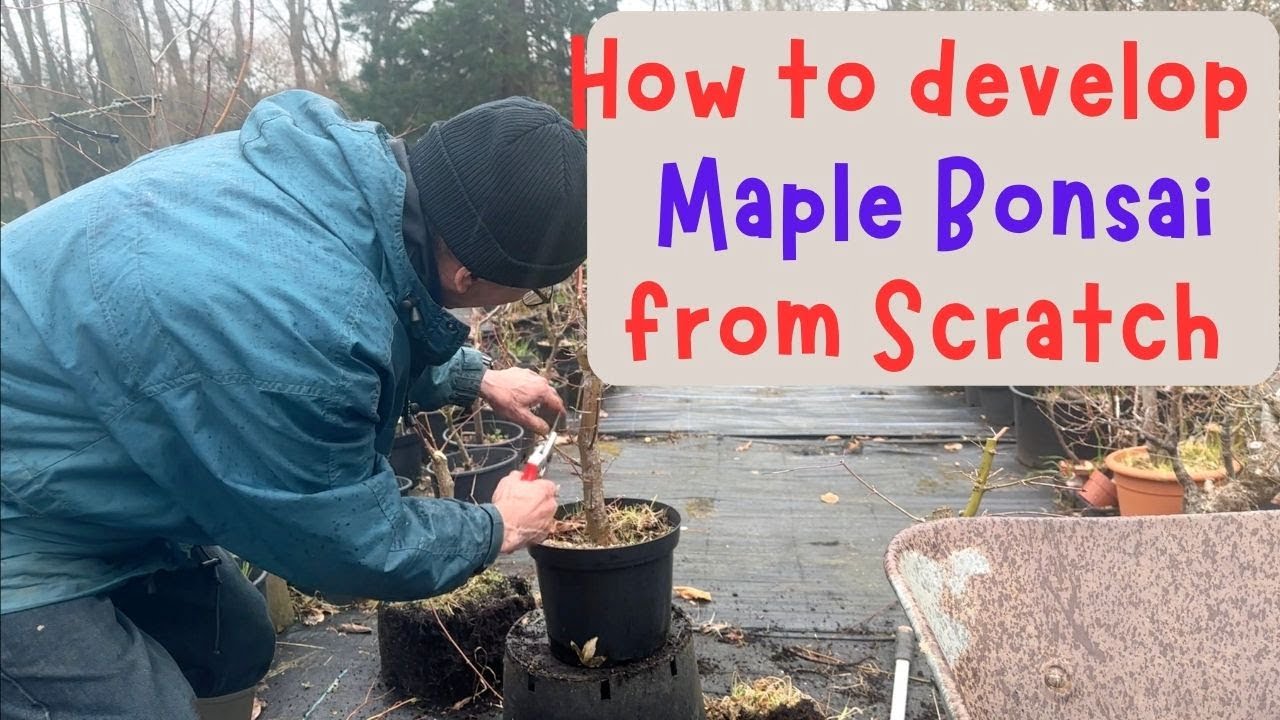We allow advertising on this website to support the blog. Some of content on this website was created with the help of AI.
Bonsai trees are a beautiful addition to any home or garden, and maple bonsai, in particular, can add a touch of stunning autumn hues to your space. However, creating and maintaining a maple bonsai from scratch can seem daunting at first. In this blog post, we’ll guide you through the basic steps of maple bonsai development, sharing useful tips and tricks along the way. Whether you’re a beginner or an experienced gardener, you’ll find plenty of valuable insights to help you cultivate a stunning maple bonsai. Let’s get started!
How to Develop Maple Bonsai from Scratch
Bonsai is an ancient art of growing miniature trees in containers. Maple bonsai is an excellent choice for those who want to start their bonsai journey. This article will guide you through the process of developing maple bonsai from scratch.
Introduction
In this article, we’ll be exploring the world of maple bonsai. Maple is a popular bonsai tree species because of its unique shape, stunning fall colors, and manageable size. It’s fascinating to see how a tree can be turned into a miniature work of art.
To develop maple bonsai from scratch, it’s crucial to have the right materials, tools, and techniques. A video about making maple bonsai from field-grown material can help you visualize the process. Herons is a bonsai nursery that offers outdoor and indoor bonsai trees and tools. They also have a small and exclusive run of branded clothing.
Social media links can guide you to bonsai-related content and communities. Follow enthusiasts and experts to learn more about this fascinating art form.
Materials and Tools
To start developing your maple bonsai, you’ll need the following materials and tools:
- Maple tree sapling or seedling
- Flower pot
- Bonsai soil mix
- Scissors or pruning shears
- Wire cutters and bonsai wire
Step-by-Step Guide
-
Choose your maple tree: You can either grow your maple tree from a sapling or a seedling. A sapling is more advanced than a seedling, so it’s a better choice if you’re a beginner.
-
Choose your container: The container should be the right size for your maple tree. The container should be small, shallow, and have drainage holes.
-
Soil mix: A suitable soil mix for bonsai contains a blend of Akadama soil, lava rock, and pumice.
-
Transplanting: Transplant your maple tree carefully into the container. Make sure to avoid damaging the roots.
-
Pruning: Prune any unwanted branches and leaves. This will encourage the tree’s growth in the right direction.
-
Wiring: Wiring allows you to shape your tree into the desired form. Wrap the wire around the branches, and bend them to your desired angle. Make sure not to apply too much pressure.
-
Maintenance: Maintain your maple bonsai by watering it frequently and fertilizing it with a specialized bonsai fertilizer.
-
Air layering: Air layering is the process of rooting branches while they are still attached to the main tree. It helps to create new growth and shape the tree.
Developing Maple Bonsai
Maples can be grown as bonsai in flower pots for 10-15 years. The speaker is showing advanced maples in their unheated greenhouse. Air layering and pruning are used to develop the maples into bonsai trees. Decisions must be made about when to air layer and prune to achieve desired results.
Maple bonsai grows best in partial shade and requires a lot of watering. Any bonsai tree needs trimming and shaping at regular intervals. Maple bonsai requires pruning in early spring before new growth appears. Wiring should be done once a year when the tree is dormant.
Multiple Maples at Different Stages
Multiple maples are shown at different stages of development. Some maples have been trained to display the natural beauty of the tree, while others have been shaped to depict a certain feeling or mood.
Rain or Shine
During the video, rain starts to fall, but work on the maples continues. This emphasizes that a bonsai enthusiast’s work is never done; it’s a year-round commitment. No matter the season or weather, a bonsai tree requires constant attention to grow and thrive.
Conclusion
Developing maple bonsai can be a fulfilling and rewarding journey. It takes patience, care, and attention to turn a maple sapling or seedling into a work of art. Remember to choose the right materials and tools, follow the appropriate techniques, and maintain your maple bonsai regularly.
FAQs
- How long does it take to develop maple bonsai?
It takes 10-15 years to develop maple bonsai in flower pots.
- What is air layering?
Air layering is the process of rooting branches while they are still attached to the main tree.
- When should I prune my maple bonsai?
Prune your maple bonsai in early spring before new growth appears.
- Can maple bonsai grow in full sun?
Maple bonsai grows best in partial shade.
- How often should I water my maple bonsai?
Maple bonsai requires frequent watering. Make sure the soil stays moist but not waterlogged.



